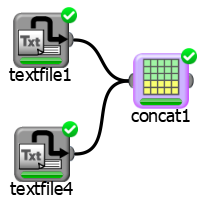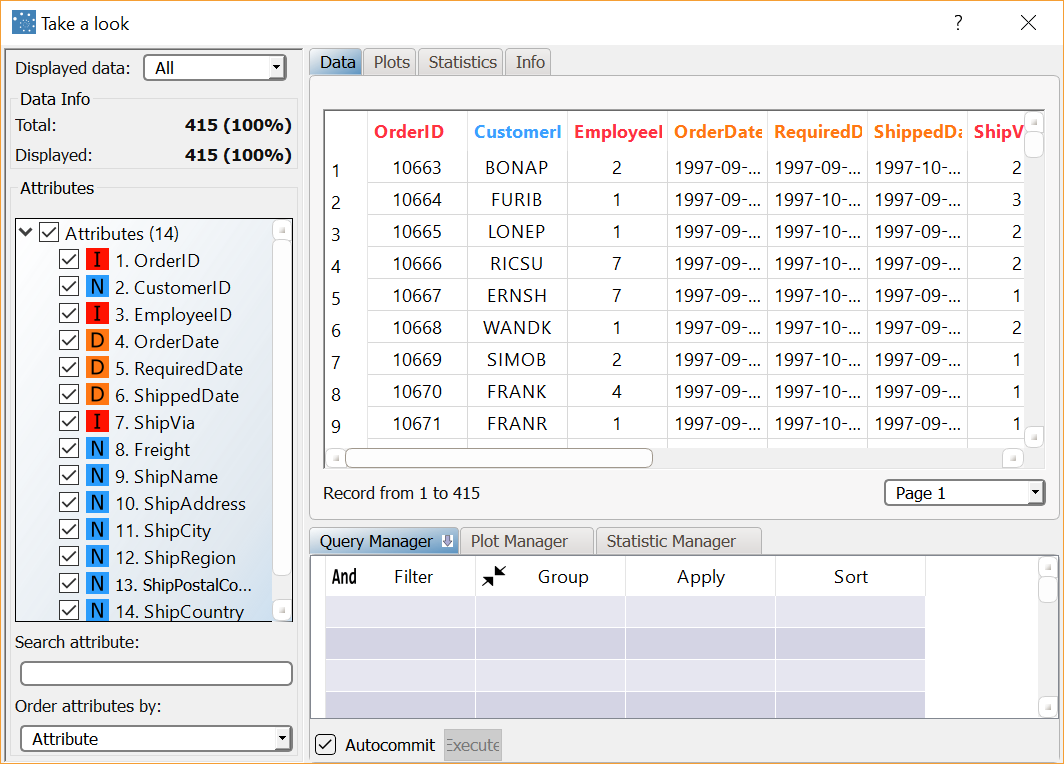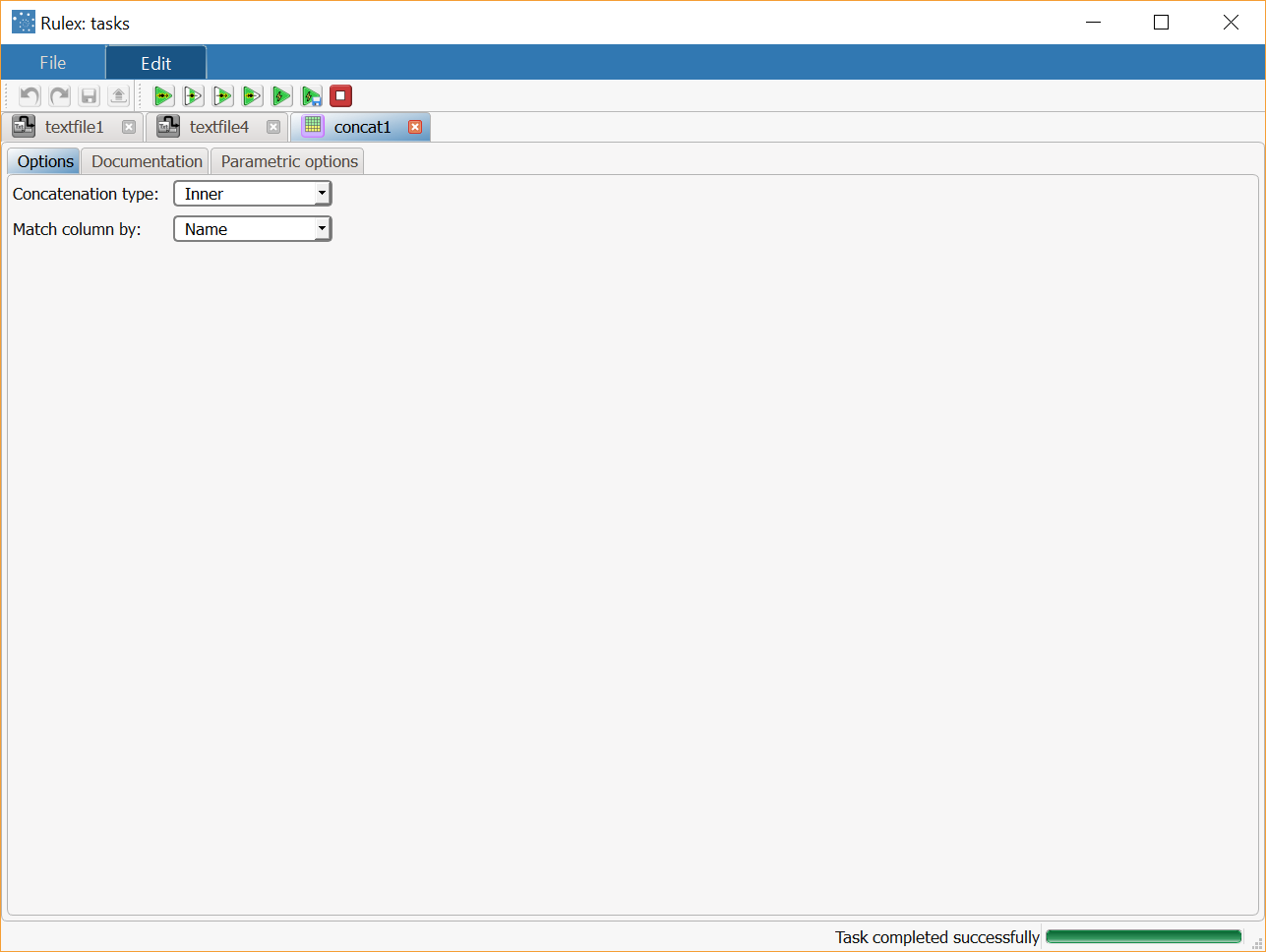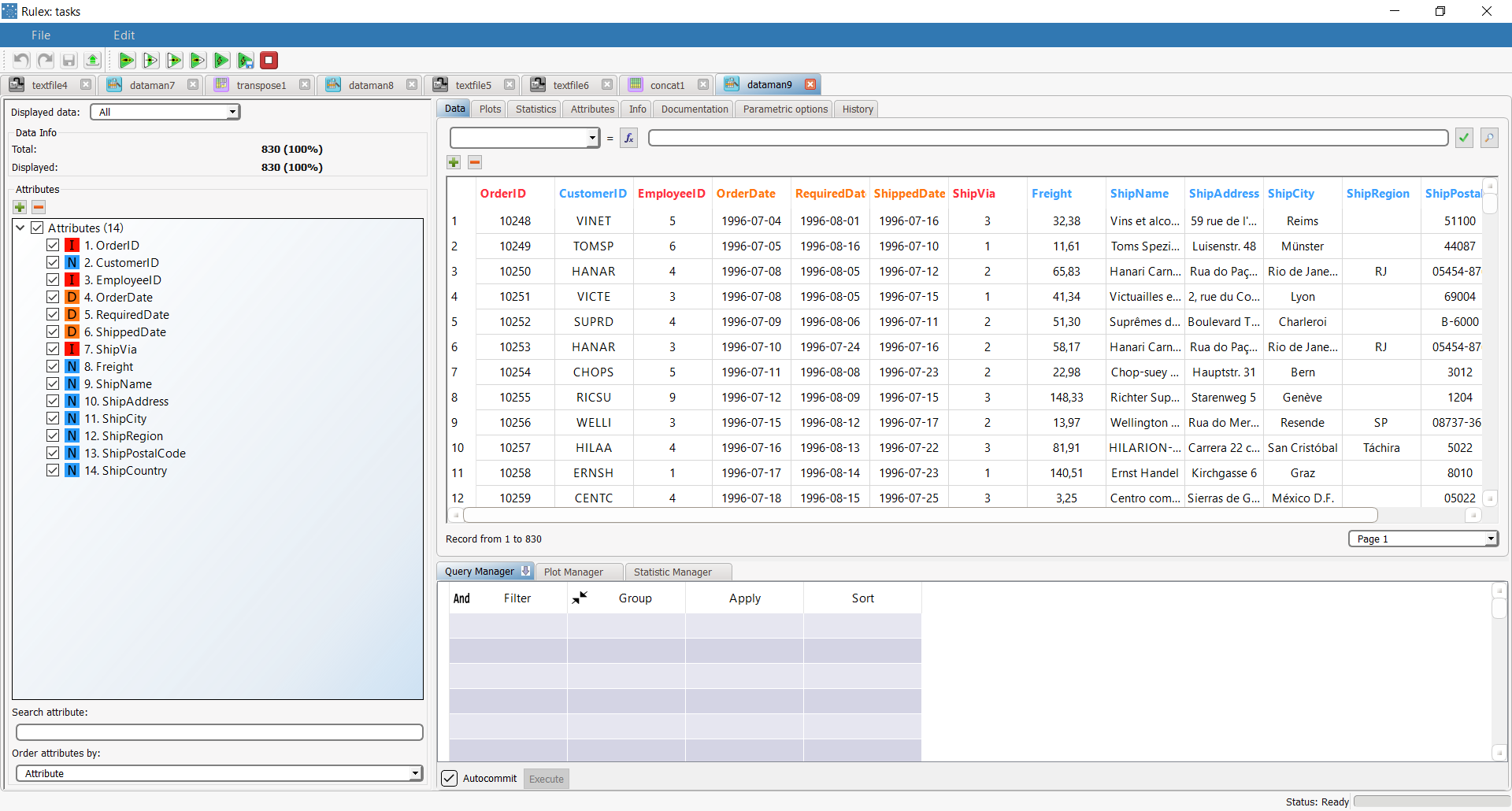Concatenating Datasets
The Concatenate task in Rulex merges datasets by their columns, creating a single table with all the data.
There is no limit on the number of datasets you can concatenate.
Prerequisites
the required datasets have been imported into the process.
Additional tabs
The following additional tabs are provided:
Documentation tab where you can document your task,
Parametric options tab where you can configure process variables instead of fixed values. Parametric equivalents are expressed in italics in this page.
Procedure
Drag and drop the Concatenate task onto the stage.
Connect the tasks that contain the datasets you want to merge to merge the Concatenate task. The order in which data is displayed in the final table depends on the order in which the import tasks are connected to the Concatenate task.
Double click the Concatenate task.
Select the Concatenation type (cattype) you require from the drop-down list:
inner (cattype = 0), where only attributes present in both tables are included in the final merged table
outer (cattype = 1), where all attributes are copied, filling in any missing values if necessary.
Select how you want to match columns from the Match column by (byname) drop-down list, either by
position (byname = 0), where attributes in the same position are considered equal
name (byname = 1), where attributes with the same name are considered equal.
Save and compute the task.
Example
The following examples are based on the Northwind dataset.
Scenario data can be found in the Datasets folder in your Rulex installation.
The original datasets consists of 415 and 830 records respectively.
The following steps were performed:
We then import the second dataset.
A Concatenate task is added to create a single dataset.
Use the Take a look functionality to check the concatenated data.
Procedure | Screenshot |
|---|---|
Import the first northwind_orders.set dataset, and compute the task. To check its data, right-click the task and select Take a look. The dataset contains 830 rows. Repeat this process for the northwind_orders1.set dataset, which contains 415 rows. | |
Add a Concatenate task to the process, and select inner concatenation, matching attributes by name. The save and compute the task. | |
To check the results, right-click the Concatenate task and select Take a look. The resulting data table contains 1245 rows (830+415) obtained by concatenating the two datasets. | northwind_orders.set was linked to the Concatenate task before northwind_orders1.set, so its data is displayed first in the final table. |



